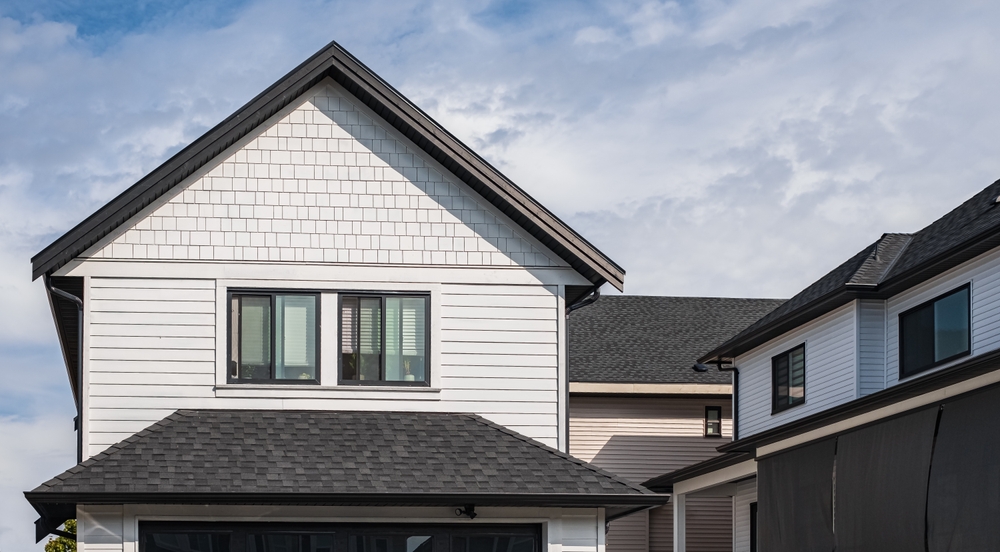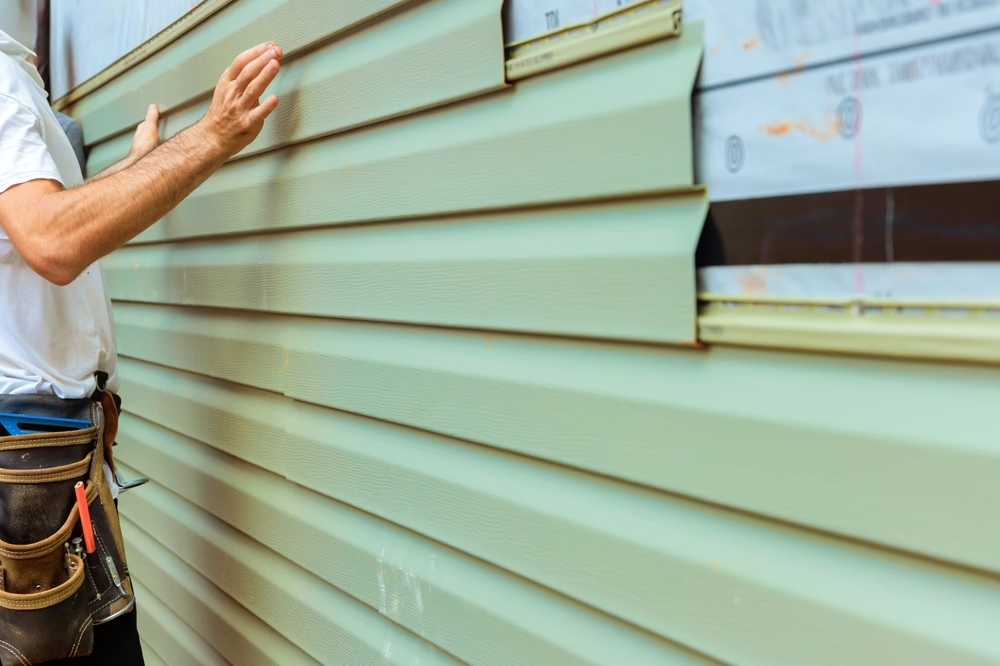A new roof is a significant investment that affects your home’s long-term value, comfort, protection, and appearance. “How long should a new roof last?” is one of the first questions homeowners ask while preparing to replace their roof. In actuality, the lifespan of a roof is determined by the kind of material selected, the caliber of installation, and the level of maintenance performed.
The most popular roofing materials, their typical lifespans, and the variables influencing how many years you might anticipate from each type are all covered below.
Asphalt Shingle Roofs
In the US, asphalt shingles are the most popular roofing material. Homeowners value how well they blend performance, style, and price. While enhanced architectural shingles may last 25 to 30 years, a simple 3-tab asphalt shingle roof typically lasts 15 to 20 years.
Numerous factors affect how long asphalt shingles last. For example, the shingle’s thickness and quality might have a significant impact. Architectural shingles typically outlast 3-tab shingles because they are made with additional layers that increase their longevity. Ventilation is another factor. Heat and moisture are trapped by inadequate attic ventilation, which can lead to shingles curling or deteriorating earlier than anticipated.
The weather is also very important. Although asphalt shingles may withstand mild wind and rain, they may deteriorate more quickly in regions that see frequent hailstorms or sharp temperature fluctuations. By planning yearly inspections, clearing out gutters to stop water backup, and replacing broken shingles as soon as possible, homeowners can increase the lifespan of an asphalt roof.
The large range of colors and styles available for asphalt shingles is another advantage. While keeping expenses reasonable, homeowners can select from a variety of designs that complement the architecture of their home. For many, the convenience of replacement and comparatively low initial cost offset the shorter lifespan. Regular maintenance and timely roof repair in Tulsa, OK, helps protect asphalt shingles from weather damage and keep your roof looking great year after year.
Metal Roofs
Metal roofing’s durability and streamlined appearance make it one of the roofing categories with the greatest rate of growth. These roofs are a long-term investment, with lifespans ranging from 40 to 70 years, depending on the metal. While premium materials like copper and zinc can survive even longer—often more than 80 years—steel and aluminum are the most popular choices.
This exceptional lifespan is partly due to metal’s inherent resistance to many of the problems that abbreviate other roof types. Water damage is less likely since it effectively sheds rain and snow. Furthermore, a lot of metal roofing systems have reflective coatings that reflect sunlight away from the house, reducing cooling expenses.
Metal roofing often requires less maintenance than other materials, but homeowners should still plan for routine inspections to look for dents, scratches, or loose fasteners. The quality of the installation is important. Metal panels may expand and contract in response to temperature variations if they are fitted incorrectly, which could cause leaks or noise problems.
Sustainability is another feature that adds attraction to metal roofing. The majority of metal roofs are made entirely of recyclable materials at the end of their useful lives. For homes seeking durability and eco-friendly advantages, this makes them a sustainable option. Since metal roofing won’t need to be replaced for many years, many homeowners view it as an investment that will pay off over time, even though the initial cost is more than that of asphalt shingles.
Wood Shingle and Shake Roofs
Wooden roofing components, such as shakes and shingles, are valued for their classic charm and organic appearance. The typical lifespan of a professionally built wood shingle or shake roof is 20 to 40 years, with cedar being one of the most popular choices because of its resistance to rot and insects.
There is a minor but significant distinction between shingles and shakes. Shakes are hand-split to give them a more rough, textured appearance, whereas wood shingles are machine-cut for a consistent appearance. Both mix in well with their natural surroundings and offer superior insulation.
However, compared to most other materials, wood roofing takes greater upkeep. Moisture can cause warping, mold, or mildew if it is not regularly maintained. Homeowners frequently need to plan recurring treatments with preservatives or fire retardants to maintain a wood roof in excellent condition. It’s also critical to clean the roof to get rid of moss, debris, and algae, especially in regions that are shadowed and retain moisture.
Climate significantly affects how long wood roofs last. Wood can break down in dry environments, but if improperly handled, it may deteriorate more quickly in humid climates. Nevertheless, wood shingles or shakes can last for decades if homeowners are dedicated to maintaining them. Wood roofing is still appealing due to its aesthetic appeal, even with its more serious maintenance needs. Few other materials can compare to the warmth and character it brings to a house.
Tile Roofs
One of the longest-lasting possibilities is a clay or concrete tile roof, which can survive for 50 years or more, and many can last for over a century if done properly. Because tile naturally resists fire, insects, and deterioration, it is particularly dependable over an extended period of time. Tile roofing’s resilience to severe weather conditions is one of its special features. Because they reflect heat and don’t fade, clay and concrete tiles work incredibly well in hot, sunny locations. Additionally, their weight helps them remain stationary in high winds. Not many homes may use tile without reinforcement, though, as their weight necessitates a solid structural base.
Tile roofs require comparatively less upkeep. Although the roof structure may require upgrades after a few decades, the tiles themselves can frequently be reused because they frequently outlast the underlayment underneath them. To find cracked or broken tiles that can be changed without affecting the rest of the roof, routine inspections are beneficial.
Tile roofs provide a distinctive aesthetic that is frequently connected to Southwestern or Mediterranean architecture. Because they are available in a range of colors and shapes, homeowners may personalize their look. Despite being more expensive initially than wood or asphalt, tile is ultimately one of the most economical roofing options due to its long lifespan and minimal maintenance requirements.
Slate Roofs
Slate roofing is regarded as the most stylish and long-lasting roofing material. Slate roofs that are constructed correctly can endure 75–100 years, and some can even last over a century. Slate is among the greatest long-term investments for homeowners looking for a permanent roofing solution because of its exceptional lifespan.
Slate is a naturally occurring stone with unparalleled fire, water, and pest resistance. Slate endures for many years without warping, cracking, or rotting like other materials do. But its weight is substantial. Slate needs substantial structural support, just like tile, and should only be installed by qualified stone roofing specialists.
When it comes to maintenance, slate requires less than asphalt or wood. Impact may cause individual tiles to shatter, but they can be changed out without compromising the integrity of the entire roof. Although slate roofing frequently doesn’t change for decades, homeowners should still plan for routine inspections to check the flashing, underlayment, and fasteners.
Slate’s beauty is another factor that keeps it in high demand. Any home is made more sophisticated by its unique appearance, which comes from its natural color changes, which range from deep gray to green and purple. Even though slate requires a larger initial investment than other roofing materials, its remarkable durability and classic beauty make it a worthwhile choice for homeowners who intend to remain in their homes for an extended period of time.
Factors That Influence Roof Lifespan
Although the material you select has the greatest impact on the lifespan of your roof, other elements also play a part:
- Installation quality: The caliber of a roof depends on the crew that installs it. Leaks, inadequate ventilation, and premature wear can all be avoided with professional installation.
- Insulation and ventilation: Enough airflow keeps heat and moisture from building up, which can harm underlayment and shingles.
- Climate and weather exposure: Roofing materials suffer from severe heat, heavy snowfall, storms, and ongoing moisture.
- Habits of maintenance: Any roof’s lifespan can be increased with timely repairs, routine cleaning, and inspections. Ignoring minor problems like clogged gutters or missing shingles can drastically reduce its lifespan.
- Material quality: Metal panels, tiles, and shingles are not all made equally. Better materials typically endure longer and function better under pressure.
Homeowners can get the most out of their roofing investment by combining the proper material, expert installation, and regular maintenance. Working with an experienced roofer in Tulsa, OK, and the surrounding areas helps extend your roof’s lifespan through quality installation, proper ventilation, and ongoing maintenance.
Choosing the Right Roof for Your Home
Budget, preferred style, and anticipated lifespan should all be considered when choosing a new roof. Although asphalt shingles might be the least expensive option, metal, tile, or slate might be a better option for people who want a roof that lasts for decades.
Regardless of the material you choose, a new roof protects your house, increases its value, and gives you peace of mind. Your investment will last for many years if the proper material quality and maintenance is followed.
Homeowners should consider aspects like energy efficiency, climate considerations, and long-term maintenance requirements in addition to materials and cost. While heavier materials like slate or tile may offer greater durability in areas prone to strong winds or storms, lighter-colored roofing can reflect sunlight and help lower cooling costs in warmer climates. For added value and sustainability, it’s also worthwhile to investigate modern roofing systems that include solar integration, improved ventilation, and sophisticated underlayment.
It can make all the difference to work with a reliable roofing contractor. A specialist can assist you in navigating design choices, clarifying warranty information, and offering advice on what suits your area and price range. You can be sure that your new roof will protect your house and improve its curb appeal for many years to come if you carefully consider your options and work with a knowledgeable team. Contact Martin Roofing and Construction Oklahoma today to schedule your consultation and take the first step toward a roof that’s built to last.


